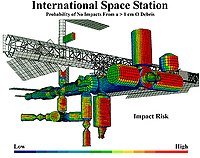
Photo from wikipedia
The psychosocial risk assessment is a systematic intervention process for organizations that aims at improving psychosocial working conditions as well as employee health. Based on a screening of working conditions,… Click to show full abstract
The psychosocial risk assessment is a systematic intervention process for organizations that aims at improving psychosocial working conditions as well as employee health. Based on a screening of working conditions, interventions to reduce risk factors are implemented and evaluated. What is missing for most screening instruments however are cut-off values to categorize working conditions into uncritical vs. critical, whereas the latter indicates an elevated risk for illness. To estimate and evaluate cut-off values, two studies were conducted using the receiver operating characteristic (ROC) analysis. In Study 1, a sample of 229 participants answered an online survey on depression (PHQ) and psychosocial working conditions using a questionnaire (DYNAMIK) that covers five factors important to workers' health: workload, boundary permeability, participation, leader support, and usability. Using the ROC analysis, criterion-related cut-off values were generated to predict depressive symptoms. In Study 2, these cut-off values were used to classify working conditions in the two categories of ‘critical’ and ‘uncritical’ in an independent sample (N = 295). It was tested for differences in the results of the two groups concerning the direct criterion of depressive symptoms and the indirect criterion of effort-reward imbalance. In Study 1, cut-off values differed between the five scales and showed different values for sensitivity and specificity. In Study 2, participants exposed to critical working conditions reported more depressive symptoms as well as an effort-reward imbalance. Cut-off values are useful to identify working conditions as either critical or uncritical. This knowledge is important when deciding which working conditions should be optimized within the context of psychosocial risk assessment.
Journal Title: International Archives of Occupational and Environmental Health
Year Published: 2020
Link to full text (if available)
Share on Social Media: Sign Up to like & get
recommendations!